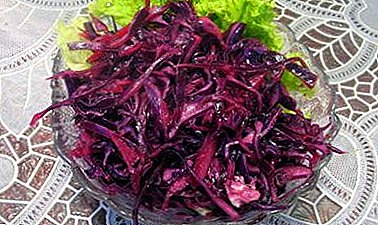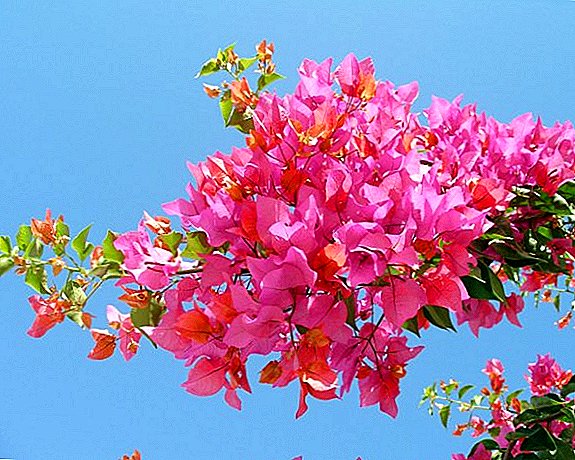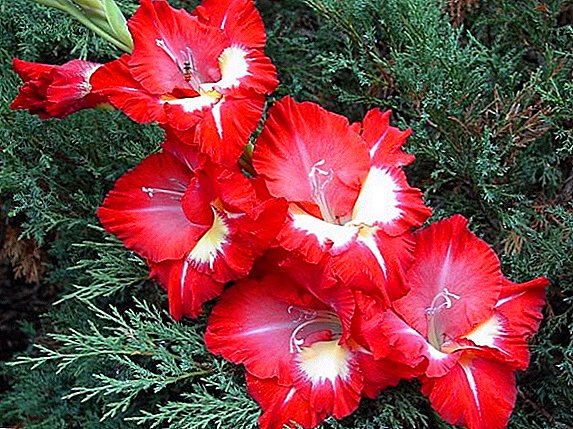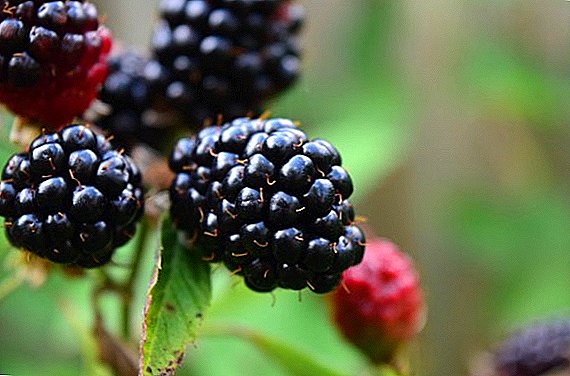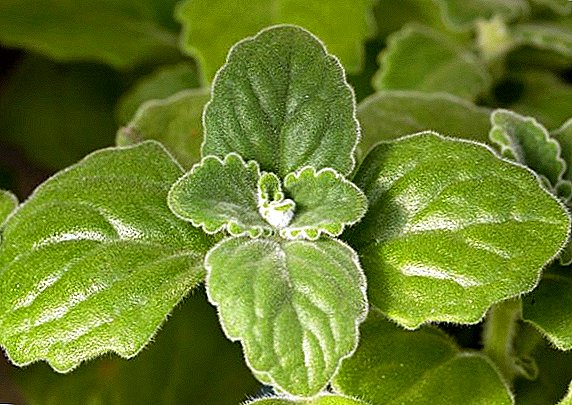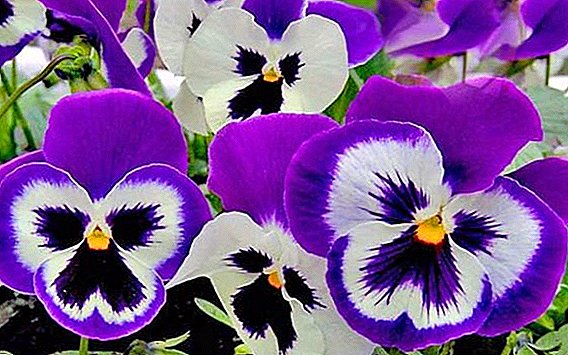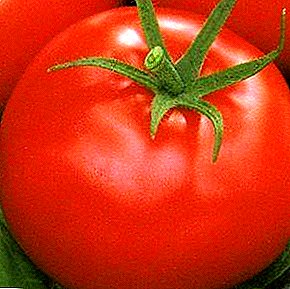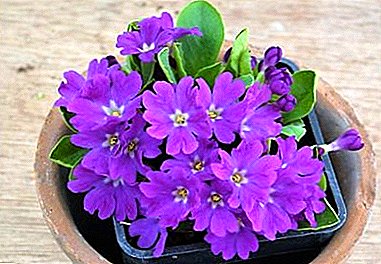
Primula magnificent flower growing in temperate latitudes. The plant can be found on the banks of reservoirs, on meadows and mountain slopes. The inflorescences are bright and varied, and are divided into - tiered, umbrella-shaped, pillow, according to the principle of distribution of flowers on the peduncle. The color of the inflorescences is very diverse, from monotone to koloirovannoy. Growing primrose consists of an initial landing and timely transplant in the future. The article discusses what to do with a primrose in the autumn, when and how to replant and how to care for the plant.
When do seeds ripen?
Primula can be propagated not only by dividing the bush and cuttings, but also grown from seeds that are harvested from testes that appear after flowering, and then placed in the soil. Usually this process occurs at the end of September, the beginning of October, it is at this time that the seeds ripen completely.
Recommendation. Do not leave the seeds next year, as their germination is significantly reduced.
Features care in the autumn
As soon as the garden plant ottsvetet, all care is to around the bushes to clean all the dried foliage, weeds, and loosen the soil. After that, leave the plants until the winter, without touching. It is at this time that leafy plates begin to grow, which will become the natural shelter for the plant root system.
Necessary actions to prepare the plant for winter
Before the snow falls, it is necessary to make timely preparation of the primrose for the winter. It is worth noting that many varieties of garden primroses are frost resistant and do not need special shelterBut it is advisable to dig up hybrid plants and place them in special storage containers.
As for frost-resistant varieties, they need to be prepared for wintering:
 to protect the roots from frost, under the bushes plants make humus in late autumn;
to protect the roots from frost, under the bushes plants make humus in late autumn;- It is worth noting that for frost-resistant flowers, a shelter from a thick layer of snow is sufficient, but not every winter is snowy and this needs to be foreseen, therefore it is better to cover a primula with spruce branches as soon as frosts start to reach -10 degrees;
- Do not touch the leaves of the plant, it serves as protection, it is better to perform these actions in the spring.
Soil and fertilizer
How to feed? Primula loves fertile, light soil., and if the soil on the site is clay, then you need to add to it (per 1 square meter):
- river sand - 3 buckets;
- humus - 0.5 buckets;
- superphosphate - 40 g;
If the soils are sandy, then they can freeze through in winter, so they are added to them (per 1 m2):
- humus - 2-3 buckets;
- potassium and phosphorus - 20-30 g;
- clay - 0, 25 buckets.
Perennial planting features
It is worth remembering that to decorate the site you need to properly plant the plant, how to do it - the answer is further.
Planting primrose can be a variety of ways, but consider when to do it and how the most common methods.
Seeds
 Most gardeners prefer to propagate the plant with seeds. Sowing can be done 3 times per season.
Most gardeners prefer to propagate the plant with seeds. Sowing can be done 3 times per season.
Gardeners generally prefer to plant a primrose in this way. The caveat is that it differs in technology, since it can be done 3 times per season, while the seeding technology differs:
- Landing in the spring. It is worth remembering that the primrose seeds very quickly lose their germination, so for the spring planting in the garden you need to use the seeds purchased in the store. But before planting the plant in open ground, you need to prepare the seeds. A month before planting, you need to pour into the container a special soil mixture, and sprinkle the seeds over it. Do not sprinkle them, just enough to push a little into the soil.
Not all primrose varieties need stratification, so before you start preparing seeds for sowing, you should clarify whether to apply long-term preparation for a particular variety.
- Sowing in the fall - the most popular technology among gardeners. If you apply this method of planting, the plants will delight you with flowers for the next season. The only rule when planting in the fall, to cover the soil in which the seeds are sown, to prevent freezing.
Interesting! As soon as the snow begins to melt and the plant will be provided with sufficient moisture, which is very good for young sprouts. At the same time in early spring there are no burning sun rays that can harm young leaves.
- Sowing on seedlings at home in late January, early February. This method is more laborious, as it requires careful preparation of seed, therefore it is used only in exceptional cases.
It is worth noting that if it is not possible to sow a primrose on your own, you can buy ready-made seedlings and propagate plants in simpler ways.
From the video you will learn how to plant a primula seeds:
Cuttings in the ground
This method of plant breeding is very simple. let's analyze how to seed the cuttings:
 Part of the shoot at the neck of the root should be carefully separated so that it has a kidney and a leaf. In this case, the sheet plate must be cut in half.
Part of the shoot at the neck of the root should be carefully separated so that it has a kidney and a leaf. In this case, the sheet plate must be cut in half.- Prepare the soil by mixing equal quantities of sand and humus.
- Plant the cuttings in the prepared composition.
- For rooting, the plant needs to create optimal conditions:
- temperature - +17 degrees;
- bright lighting without direct sunlight;
- the soil is moderately wet.
When a third leaf appears, primula is transplanted into a small pot, the diameter of which should not be more than 10 cm. In the garden, the plant is planted with the onset of warm weather in the open area.
From the video you will learn how to divide primroses in the fall:
When is it best to replant: in spring or in autumn?
When to transplant the plant? The transfer of a flower to another place can be done both in autumn and spring, there is not much difference when growing a flower in the southern regions.
Important! In central Russia, transplantation is necessary only in the spring, otherwise the roots simply can not gain strength before the winter cold, and the primrose may not survive the winter.
Possible diseases and treatment
Primula - a plant very resistant to various pests and infections. But she is very vulnerable during the transplant and post-transplant period. In this period The plant may be subject to the following attacks:
- anthracnose;
- powdery mildew;
- rust;
- rot.
In addition, primrose can be observed fungal lesions:
- cricosporella;
- Ramularia;
- bacterial blotch.
 Diseases affect both young leaves and old ones. The fact is that during the rooting period after transplantation, the plant's immunity weakens greatly, and it cannot cope with diseases and pests on its own - primroses should be helped by treating with fungicides.
Diseases affect both young leaves and old ones. The fact is that during the rooting period after transplantation, the plant's immunity weakens greatly, and it cannot cope with diseases and pests on its own - primroses should be helped by treating with fungicides.
You can spray the plant with copper oxychloride or Bordeaux liquid. You should not also forget that phytophthora may appear in the crop, a parasitic fungus that can kill a plant - in this situation, reduce watering. Slugs, aphids, weevils, nematodes, ticks and fleas can also annoy young plants, so required treatment with drugs such as:
- Intavir
- Spark.
- Ragor
Care
Top dressing
On a note. Primula is called primrose and this is not accidental, as it begins to grow, when the snow melts. Therefore, it needs feeding in early spring.
Complex fertilizers are applied to the soil, which should contain (based on 1 square meter 10-20 grams):
- phosphorus;
- nitrogen;
- potassium.
In addition, it is necessary to remove dried foliage, which will prevent fertilization, and the ground under the bushes need to be well loosened so that air can reach the roots.
Repeated feeding is carried out in 12-15 days after the primrose blooms. Apply organic fertilizer, which is diluted in proportions of 1:10, 0.5 liters of solution is poured under a single flower. This will help the plant to lay flower buds for the next year.
Pruning
Trimming is a necessary and important procedure, which is not recommended to be neglected. Should I prune the plant in the fall? It is necessary to do this procedure at a certain time, and it is better in the spring, as soon as the snow melts and strong frosts stop. This will stimulate the plant to new growth and flowering.
On the care of the primrose in the open field and at home, we described in detail here.
Conclusion
Growing primrose in the autumn period has some features that you should definitely take into account to get strong plants and magnificent and magnificent flowering bushes. If done correctly, your garden will look great for a long time.
Primula is a very popular plant with landscape designers, as with the help of various types and varieties of plants you can recreate unique flower beds that can decorate any square, park or square.


 to protect the roots from frost, under the bushes plants make humus in late autumn;
to protect the roots from frost, under the bushes plants make humus in late autumn; Part of the shoot at the neck of the root should be carefully separated so that it has a kidney and a leaf. In this case, the sheet plate must be cut in half.
Part of the shoot at the neck of the root should be carefully separated so that it has a kidney and a leaf. In this case, the sheet plate must be cut in half.